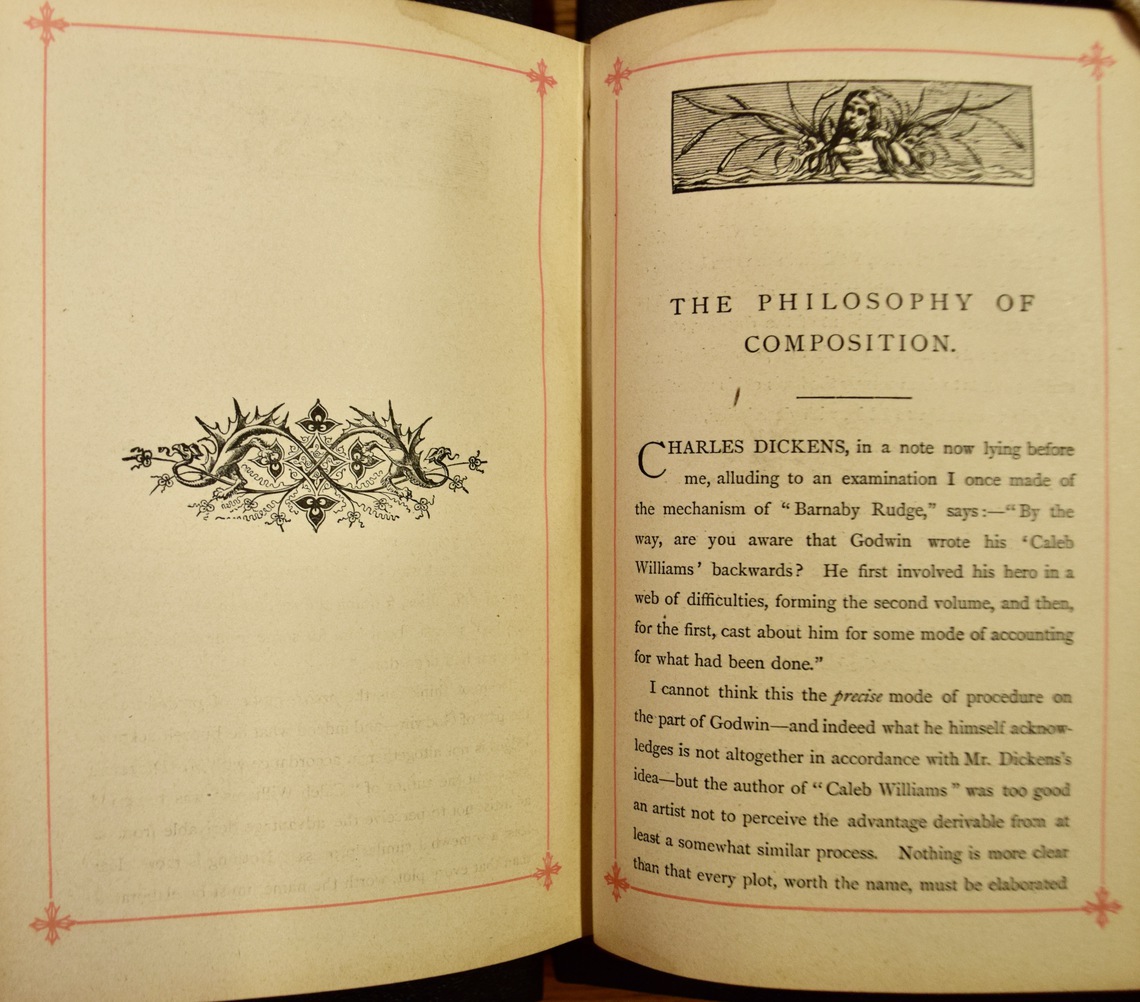"Philosophy of Composition"
-
Writing nearly a century after Young, Edgar Allen Poe demonstrates a shift away from romantic notions of authorship. Poe’s essay “Philosophy on Composition” combines a detailed focus on how poems work with a lightly humorous account of how poems are written. Authors, Poe commanded, should keep “originality always in view” while also considering what artistic strategies might effectively make an impression on “the heart, the intellect, or . . . the soul” of readers. Pointing out the dearth of confessional texts describing creative processes, Poe suggests that perhaps writers prefer not to puncture their romantic reputations with truthful descriptions of their craft. He urges aspiring writers to realize that originality is not merely an “impulse or intuition,” but instead the prize of strategic work. His own poem, “The Raven,” was the result not of an inspired “frenzy,” but had “proceeded, step by step, to its completion with the precious and rigid consequence of a mathematical problem.”
I have often thought how interesting a magazine paper might be written by any author who would—that is to say, who could—detail, step by step, the processes by which any one of his compositions attained its ultimate point of completion. Why such a paper has never been given to the world, I am much at a loss to say—but, perhaps, the autorial vanity has had more to do with the omission than any one other cause. Most writers—poets in especial—prefer having it understood that they compose by a species of fine frenzy— an ecstatic intuition—and would positively shudder at letting the public take a peep behind the scenes, at the elaborate and vacillating crudities of thought—at the true purposes seized only at the last moment—at the innumerable glimpses of idea that arrived not at the maturity of full view—at the fully matured fancies discarded in despair as unmanageable—at the cautious selections and rejections—at the painful erasures and interpolations—in a word, at the wheels and pinions—the tackle for scene-shifting—the step-ladders and demon-traps—the cock’s feathers, the red paint and the black patches, which, in ninety-nine cases out of the hundred, constitute the properties of the literary histrio.
Introduction
- Label
- "Philosophy of Composition"
- Author
- Edgar Allen Poe
- Original Publication Date
- 1846
- New Publication Date
- 1880
- Publisher
- Ward, Lock, Bowden & Co
- Location
- RBML
- Case
- 1
